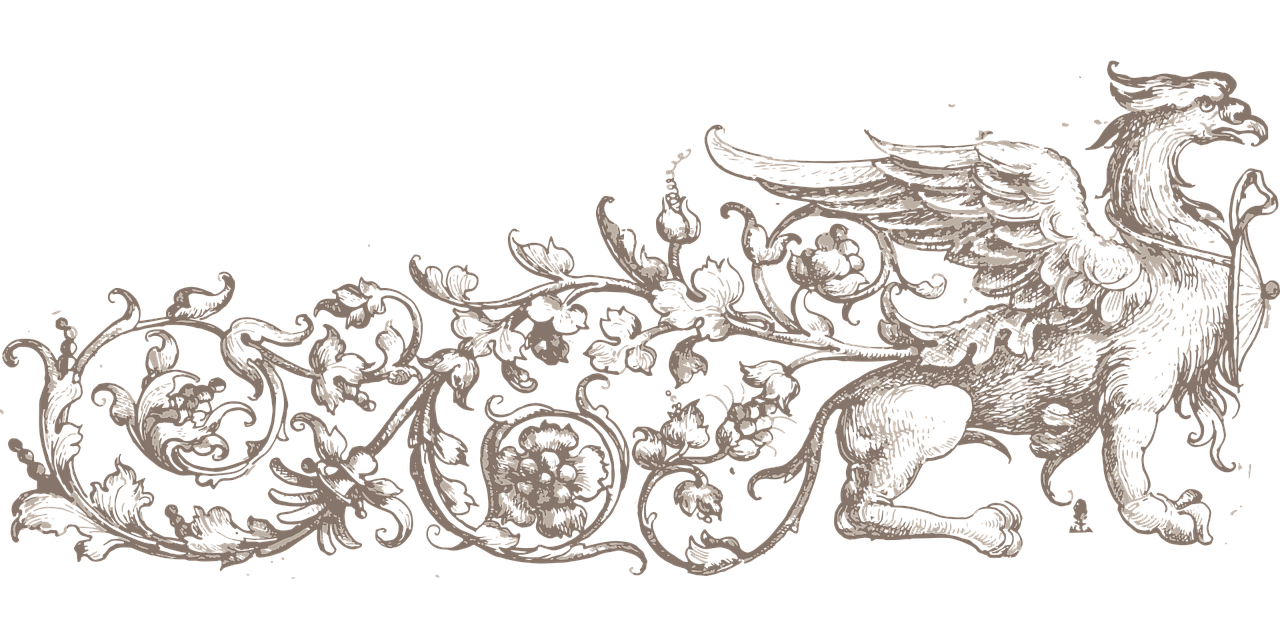This page intends to retrace the long history of education in Orleans. We will look into its schools and, of course, its university. Different articles will be devoted to these institutions. They will appear on this page.
The first article we would like to share with you deals with the birth of the University of Orleans.
Birth and Creation of the University of Orleans
The existence of the University of Orleans was formalized in 1306 by Pope Clement V, but the history of education in this city of the Loire Basin dates back to the Carolingian era. This deeop-rooted tradition associated with a new way of teaching Law contributed to make Orleans a law school then a law university renowned throughout medieval and modern Europe.
Teaching in Orleans before 1306
In the year 1306, the University of Orleans was born : Pope Clement V endowed the city with its first university statutes. Unlike many Europeans universities, this one is not an ex nihilo creation. It builds on a long tradition of education provided mainly by the cathedral school, in Orleans as elsewhere.
It is believed that the Orleans Cathedral School was founded in the 9th century by Bishop Théodulfe, a close advisor to Charlemagne. This school, in the 12th and the beginning of the 13th century, is renowned. It is considered in the same way as the schools of Paris, Bologna or Salerno providing courses based respectively on liberal arts, law and medicine. In Orleans, the preponderant subjects at that time were grammar and Latin poetry.
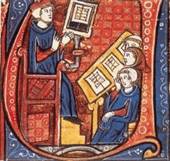
The impossible learning of Roman Law in Paris
Although Law is already taught in Orleans, this subject is permanently associated with the city, thanks to two events that took place in Paris at the beginning of the 13th century. In 1219, the Super Speculam Bull of Pope Honorius III is published. It prohibits the teaching of Law in the schools of Paris: “we strictly prohibit and we strictly defend that in Paris, or in the cities or in the neighboring places, someone dares to teach civil law or to follow the lessons of it. That anyone who contravenes this ban, not only be excluded for the moment from the defense of causes, but also that, after being summoned by the local bishop, he is chained by the bond of excommunication1 “. This bull was due to the Pope’s fear that learning Law will distract teachers and students from theology.
A few years later, between 1229 and 1231, after several strikes, teachers left the Parisian schools to reach various cities such as Orleans and Angers. These two events triggered the development of Law education in Orleans, which supplanted that of Bologna, which set the benchmark until then.
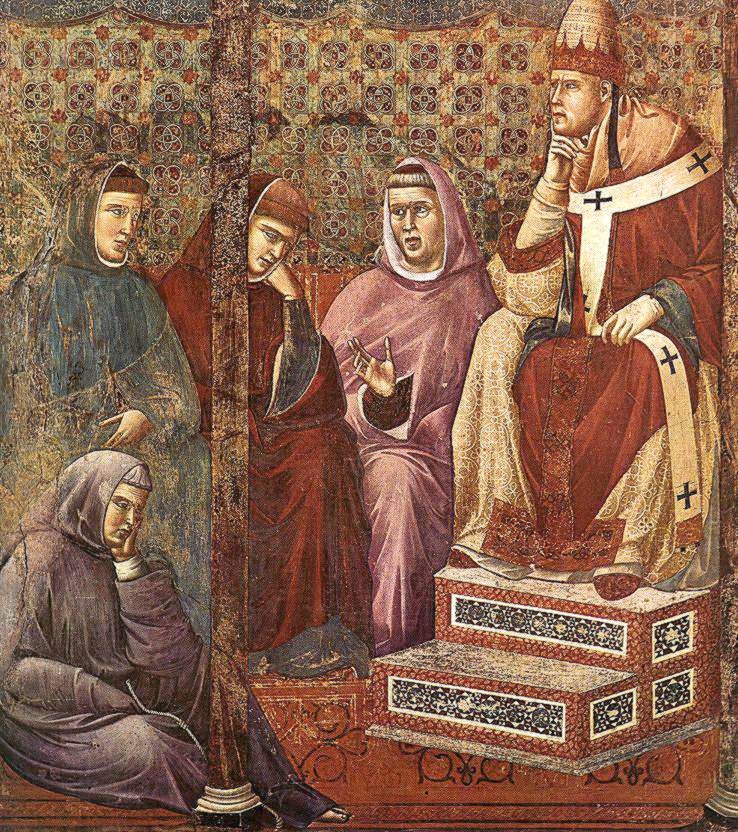
Law Education in Bologna
In the 12th century, the University of Bologna was the center of Law Education. It provided education whose quality was recognized throughout medieval Europe. The conflict called the Quarrel of the Investitures, which must be placed in the context of the Gregorian reform opposing the papacy to the Holy Roman Empire, required an important recourse to law. This power game between the papacy and the Empire, two forces aspiring to domination, stimulated the efficiency of this teaching.
It was within the framework of this reform that at the end of the 11th century, in Bologna, the Compilations of the code of Justinian were rediscovered. The Justinian compilations is dated from the 6th century and was written at the request of the Byzantine emperor Justinian. It forms the pillars of knowledge of Roman law, that is to say of the corpus iuris civilis. The Compilations were studied at this university, where the sophisticated and modern character of Roman law emerged.
In this climate of intellectual turmoil, at the start of the 13th century, a master from Bologna, called Accurse, undertook to write a gloss covering the entirety of the Compilations of the Justinian Code, dated to the 6th century. Through this work, called the Great Gloss, the entire Corpus iuris civilis was brought together, discussed and explained.
This long-term work was deeply innovative. It confirmed the predominance of Bologna in law education. The peak of this teaching lasted several decades. However, from the second half of the 13th century, the gloss or the explanation of texts, seemed like a rigid and heavy doctrine. It seemed unable to adapt to new legal realities.
Masters (such as Guido de Cumis or Pierre Peregrossi) then left this university for the Orleans law school. There, thanks to the teachers who left Paris between 1229 and 1231 and to this influx of Italian masters, Orleans became a school at the forefront of legal matters.

A new way to learn rich in consequences
A new way of learning Law is being introduced there. This new method is broken down into 4 points:
1: Use of logic and linguistics,
2: Critical approach to texts, verification of sources,
3: Use of canon law to comment on the Law,
4: Education provided by legal practitioners. This teaching takes into account the use of Law outside the walls of the university1.
With this new method, learning Law is deeply transformed. The text explanation leaves room for comments. This technique was developed by the Orleans masters Jacques de Révigny and Pierre de Belleperche. The first one taught from 1260 to 1280 before becoming archdeacon of Toul, then bishop of Verdun in 1289. The second one taught from 1280 to 1296 in Orleans. He then entered the service of the king, became bishop of Auxerre and chancellor of France.
Thanks to this development in teaching methods, Orleans became the most important center for the study of Law. Pierre de Belleperche was consecrated by Pope Gregory IX who, in 1235, authorized this teaching by means of a bull and created a studium, a place to welcome students from all walks of life.
1BASSANO, Marie. Introduction historique au droit L’émancipation et l’influence des droits savants. Dans : Université Numérique Juridique Francophone [en ligne]. 2014.
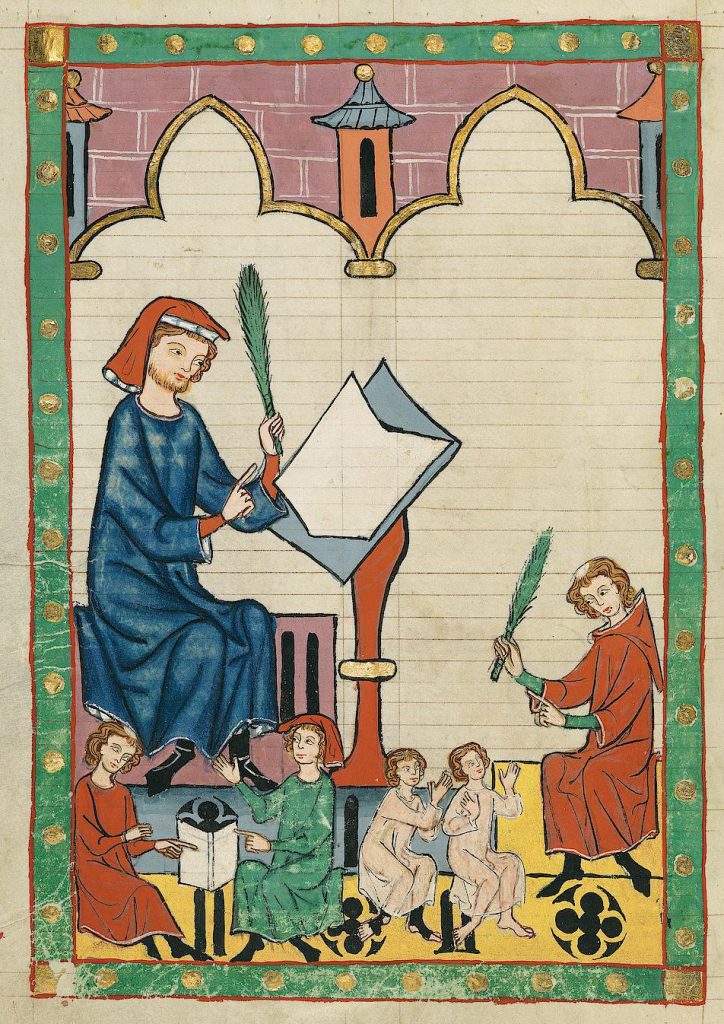
This radiant center provided the royal and papal administrations with particularly well-trained jurists. For both teachers and students, passing through this school was synonym of brilliant careers. Therefore, the Orleans Law school and later the University trained officials in the administration of the kingdom and the Church. It has been both a school of administration and the Paris law school, its branch of sorts. Thus, among the various students who learned civil law in the school of Orleans, two became popes, five cardinals, 37 bishops or archbishops, 39 joined the service of the king, others served the great princes of the royal house, others returned to the service of the English kings Henry III of England and Edward I… 1
The foundations of the University of Orleans
In the ranks of this school, Bertrand de Got was a pupil at the end of the 13th century. He ascended to papal dignity in 1305 and became Pope Clement V. One year after being invested with the highest ecclesiastical dignity, Clement V published the bull “Dum Perspicater”. This legal act granted the Orleans school statutes transforming it into a university, a studium generale. Although this decision confirmed the influence of law schools in Orleans, the genesis of this university is much longer and lasted almost a century. However, civil law schools, in particular, had enjoyed a great reputation since the 1270s.
These statutes provided privileges to teachers and students. They could, for example, be judged only by ecclesiastical jurisdiction. Teachers, students and their servants were thus withdrawn from secular justice. The legal and fiscal advantages granted to academics and the autonomy they enjoyed placing them above the common lot were not well accepted by the local population. They exacerbated tensions and, in 1309, riots opposed the inhabitants of the city and students. In 1311, a new anti-student riot took place, and caused damages to the Dominican convent.
The King of France, Philippe IV the Fair, which was held outside the creation of the University of Orleans in 1306, was then forced to intervene. He could not let unrest invade this city located in the heart of the royal domain. In 1312, the king, aware of the importance of the education provided to train intellectuals required by his bureaucracy, and of the need to appease the urban population, made several decisions. At first, he confirmed the main privileges of Orleans academics by reminding them that they were under his protection. Secondly, by letters of July 17, 1312 and December 21, 1312, he decided to abolish the university, thereby canceling a papal bull. The academics lose their statutes. They became in fact part of common law. Education continued, but in its previous form, that of schools.
If the learning of law continued in Orleans, some of the teachers and students left the city for Nevers, located outside the royal domain. This situation continued until 1316 with the accession to papal dignity of John XXII, also a former student of the schools of Orleans. In 1319, he took the decision to re-establish the University of Orleans. This task was entrusted to Cardinal Gaucelme de Jean. He went to Orléans and, associated with local ecclesiastics, he ensured the support of the local clergy before reinstating the bull “Dum Perspicater” on April 23, 1320. An important modification was however made : the entrusted power to students was much more limited.
Philip V, son of Philip IV the Fair, rallied to the papal decision after questioning the local population. Indeed, they accepted the return of the university, aware of the income and the prestige they could gain from the presence of a studium generale in their city.
1BASSANO, Marie. Introduction historique au droit L’émancipation et l’influence des droits savants. In : Université Numérique Juridique Francophone
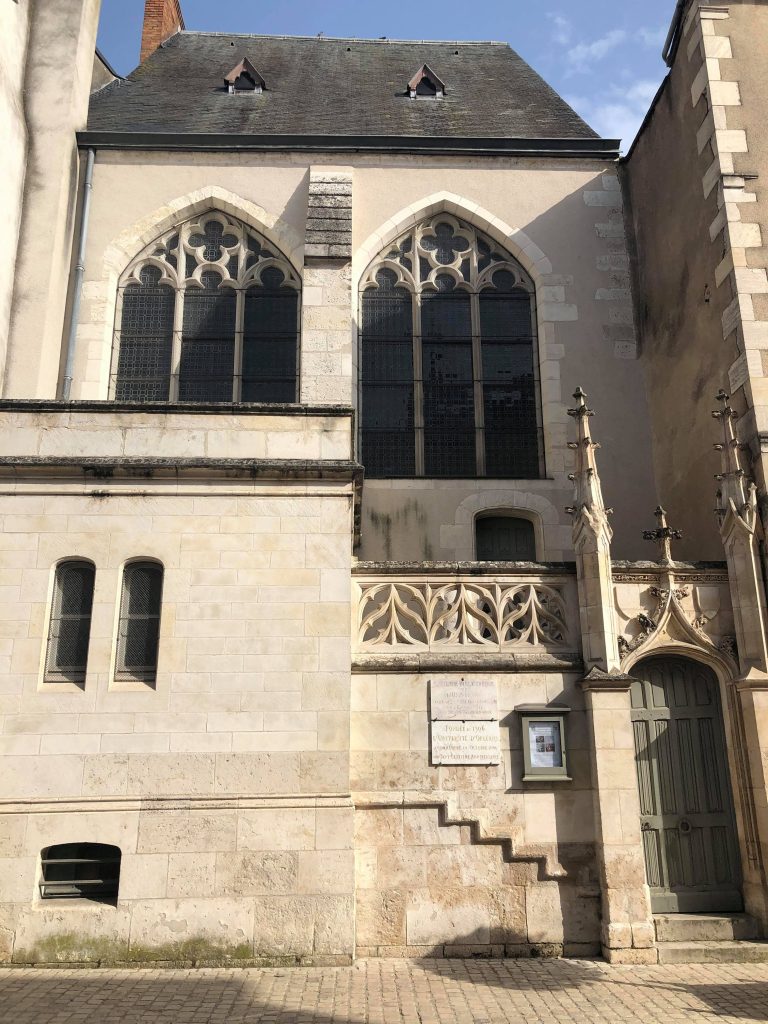
Organization of the University of Orleans
Like other universities of its time, the University of Orleans did not have its own premises. The lessons took place in rooms rented by the teachers.
In Orléans, lessons were given in houses located around the Saint-Pierre-le-Puellier church. More precisely, these schools were all located between the current rue de l’Université, rue du Pommier, rue du Puits-de-Linières, rue du Gros Anneau and rue des Africains. Later, in the first quarter of the 15th century, the university space extended beyond this urban sector and crossed the rue de Bourgogne. Indeed, it was in the current rue Pothier that the university bookstore was built. This building still exists today, it is called “Salle des Theses”. It is the only real estate vestige of this university.
The students of the University of Orleans, as in other universities, were united in “nations”. In Orleans, there were ten: the nations of France, Germania, Lorraine, Burgundy, Champagne, Picardy, Normandy, Touraine, Guyenne and Scotland. Each nation had to elect a prosecutor. Prosecutors elected a rector whose task was to organize lessons and defend the privileges of academics (students and teachers).
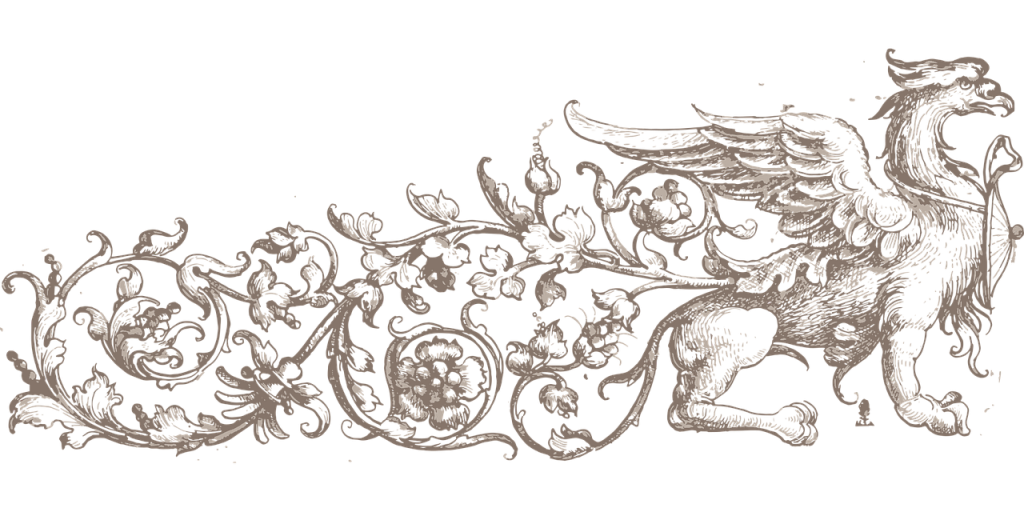
This page is under construction. Tracing the history of this university from its foundation to 1793, when it was abolished, requires long and meticulous work. We can bet that this page will be enriched later !
We can only advise impatient readers to refer to the following book : PERTUÉ, Michel (dir.). L’Université d’Orléans, 1306-2006: regards croisés sur une histoire singulière. Orléans, France : Presses universitaires d’Orléans, 2008. ISBN 978-2-913454-36-1
All the photos used on this page are copyright free.
You will find the bibliography used for this article HERE.
